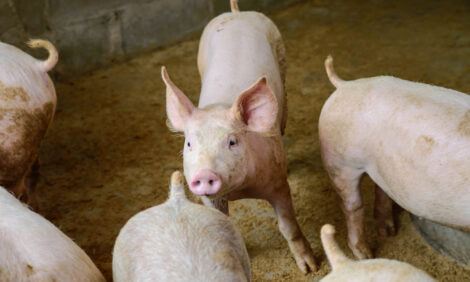Demand for live hogs more inelastic
US - US Weekly Hog Outlook, 30th May 2003 - Weekly review of the US hog industry, written by Glen Grimes and Ron Plain.
|
Need a Product or service?
|
|

Ron Plain |
April retail pork prices increased 0.8% from March. However, pork prices for the first four months of 2003 were 3.1% below a year earlier.
Live hog prices for January-April were down 5.8% with only a 1.5% increase in pork production. All of the decline in live hog prices were due to the lower retail prices. Marketing margins for these four months were down 1.9% from twelve months earlier. This data continues to support the belief that the demand for live hogs have become much more inelastic. In other words, the live hog prices change much more relative to supply changes than they did fifteen-twenty years ago.
Demand for pork at the consumer level was down about 2% from January-April compared to 2002. However, live hog demand was down only 0.6% in these four months relative to last year.
We have hopes that demand for pork for all of 2003 will be close to a year earlier and that demand for hogs at the live level will be up from 2002.
We made our first effort this week to estimate the size of the hog breeding herd for June 1. Our preliminary estimates are for the herd to be down 4% from a year earlier.
A 4% smaller herd than a year earlier is quite positive on the surface for continued reduction in supplies into 2004 and higher pork and hog prices. However, we probably need the breeding herd to be down more than 4% to reduce hog supplies enough to push annual average hog prices into the mid-40's or higher because of the potential for productivity growth.
Productivity growth for the year ending February 28, 2003 was down a little over a half of a percent, but all of the decline was due to reduced weights during the last half of 2002 from a year earlier.
A significant portion of the problem of too much pork for the demand to get a profitable price for producers in the last few years has been due to productivity growth in the herd. For example, for the fours years ending February 28, 2002, productivity growth in the U.S. was about 3.3% annually. With a demand growth of only about 1.5%, it is very difficulty to keep the breeding herd reduction enough to keep pork production in line with demand for profitable producer prices with the current structures of the production segment of the industry.
A little progress was evident at the end of this week for more improvement in prices for hogs. Loin prices improved and ham prices were a little higher with boston butts holding steady and belly prices quite strong.
One of the encouraging signs now is the weight of hogs. The average live weights of barrows and gilts for Iowa-Minnesota for the week ending May 24th were 1.8 pounds below a year earlier and were below twelve months for the last several weeks. However, carcass weights of barrows and gilts under Federal Inspection has been the same to up one pound in recent weeks.
Live hog prices this Friday were from $1 lower to $1.50 higher than seven days earlier. The top prices Friday morning for live hogs at select markets were: Peoria $41, St. Paul $41.50, Sioux Falls $42, and interior Missouri $39.25. Average carcass prices on Friday morning for negotiated hogs by region for 185 pound carcass with 0.9-1.1 inches backfat, six square inch loin two inches deep were: Western Cornbelt $58.58, Eastern Cornbelt $57.59, and Nation $58.08.
Slaughter this week under Federal Inspection at 1505 thousand head was down 4.9% compared to a year earlier.


















